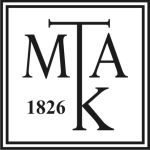A joguralom elvét megalapozó elemek a Vetus Testamentumban és a Novum Testamentumban
DOI:
https://doi.org/10.15170/Dike.2022.06.01.13Kulcsszavak:
Mosaic Law, Torah, Decalogue, Deuteronomy Law of the King, Torah of the King, Lex Rex, rule of law, RechtsstaatAbsztrakt
Our study undertakes to explore the Old and New Testament roots of the rule of law. It shows that the roots go back to the Mosaic laws and the organization of the ancient Jewish state based on them, an ancient state based primarily on laws. It points out that from the aspect of state and legal theory, the uniqueness of the Mosaic laws lay in the presentation of the supremacy and primacy of the law. This principle was reflected in the fact that no one, neither the king nor any leaders, could set themselves above the law. In addition, according to the specific laws concerning Israel’s kings, the exercise of royal power was even more confined within the framework of the law. We present that the principle of governance bound by law is part of the social teaching of both the Old and the New Testaments. All of this – in interaction with the related elements of ancient Greek-Roman political philosophy – played a prominent role in the fact that it was the Judeo-Christian culture where the idea of the rule of law spread and became the basic principle of the political and legal system of the states belonging to this circle.
Downloads
Megjelent
Hogyan kell idézni
Folyóirat szám
Rovat
License
Open Access politika: A folyóirat nyílt és korlátlan hozzáférést biztosít a tartalmához. Bárki jogosult a közzétett tartalmak letöltésére, felhasználására, nyomtatására, terjesztésére és/vagy másolására a nemzetközileg elfogadott tudományetikai normáknak megfelelően.
A folyóirat (Kiadó) szabadon elérhetővé és letölthetővé teszi a cikkeket saját hivatalos, kiadói honlapján, időbeli korlátozás nélkül. A cikk első közzétételének joga kizárólagosan a Kiadót illeti. A Szerző elfogadja, hogy a Kiadó a cikket oly módon teszi közzé, hogy a cikk felhasználási jogaira bármely harmadik fél számára az első közzétételt követően a Creative Commons Attribution-NonCommercial-SharAlike 4.0 (CC-BY-NC-SA 4.0) licenc feltételek az irányadók. A Kiadó e licensz keretében átalakíthatja a cikket tetszőleges elektronikus formátumba, a cikket számítógéppel vagy elektronikus adathordozóra másolhatja. A Kiadó a cikk közlési és felhasználási jogát megoszthatja bármely harmadik féllel, illetőleg e jogokat bármely harmadik féllel közösen gyakorolhatja. A Kiadó a Szerző nevében felléphet a cikkel kapcsolatos jogsértések, jogtalan felhasználás és szellemi tulajdon sérelmét jelentő magatartások esetén. Gyakorolhatja mindazon jogokat, amelyeket a fent megjelölt „CC BY NC SA 4.0” licenc feltételek lehetővé tesznek harmadik felek számára.










